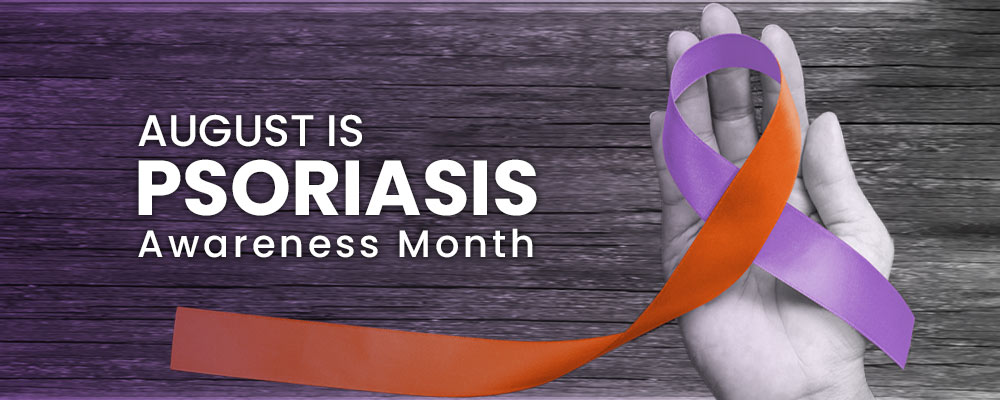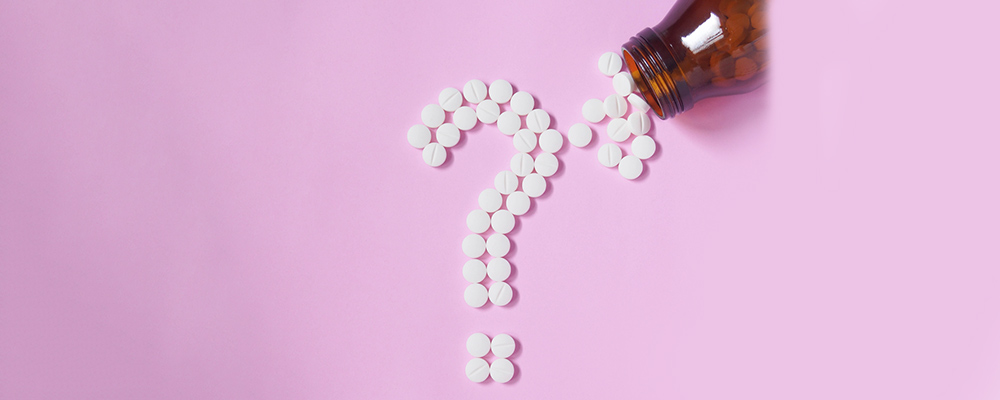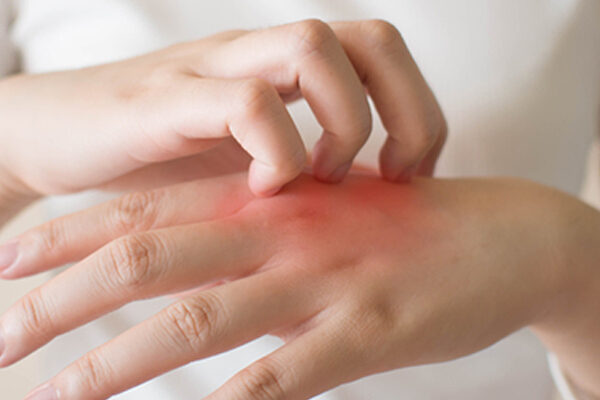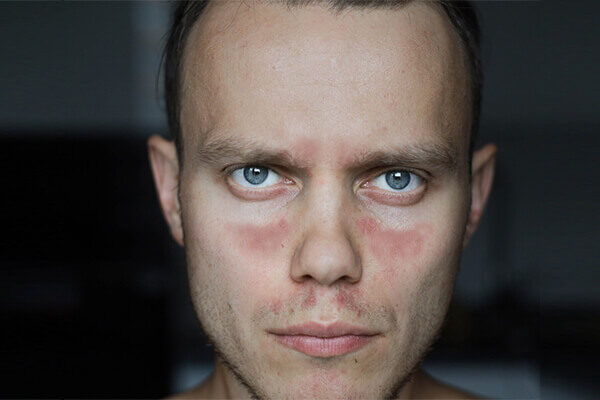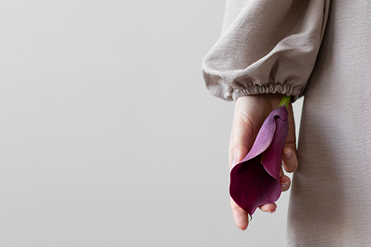Updated on August 16, 2022
Psoriasis Awareness Month: Introduction
Have you ever experienced a rash that is persistent, itchy, and painful? Various skin conditions present as rash and are painful. However, certain distinct features help to distinguish them from other skin issues. Psoriasis is one of those skin conditions that affect certain parts of the body including the knees, scalp, and elbows. As a part of Psoriasis symptoms, the skin of these areas becomes itchy, red, and scaly. This Psoriasis Awareness Month, learn more about this complex skin condition, whether or not can Psoriasis spread, its symptoms, and delve a little deeper into it.
Prevalence of Psoriasis:
As per the US census data, around 7.55 million US adults have Psoriasis. Out of which, 3.2% are women and 2.8% are men. There is not much of a difference between them.
What Causes Psoriasis?
Psoriasis is an immune-mediated condition, meaning that a disruption in the immune system is the cause of it. The immune system overacts resulting in increased skin cell growth. Normal skin cells grow and slough off in about a month. With Psoriasis, it is not the same. The skin cells instead of shedding off, pile up with the new emerging cells. This process takes 3 to 4 days in total.
Symptoms to Look for this Psoriasis Awareness Month:
This Psoriasis Awareness Month, keep a lookout for these Psoriasis symptoms that can sometimes be confused with other skin conditions. Symptoms usually begin to show at around 15 years of age and continue into adulthood. However, the prominent features include:
- Patchy skin or rash that variates from person to person,
- Dandruff-like scaling,
- Color variation in patches,
- Small scaling sites,
- Cracked and dry skin,
- Itching, burn, soreness, and
- Cyclic rashes come and go
What are the Different Types of Psoriasis?
Several types of Psoriasis are:
-
Plaque Psoriasis:
Plaque Psoriasis, the most prevalent type of Psoriasis, results in scale-covered, dry, elevated skin patches (plaques). They could be few or numerous. As part of Plaque Psoriasis symptoms, they typically show up on the scalp, lower back, elbows, and knees. Depending on the skin tone, the patches have different colors. On dark or Black skin, the afflicted skin may heal with transient color changes (post-inflammatory hyperpigmentation).
-
Nail Psoriasis:
Pitting, irregular nail growth and discoloration can all be brought on by Psoriasis and affect both fingernails and toenails. The nail bed may become loose and separate from psoriatic nails (onycholysis). The nail may break if the illness is severe.
-
Guttate Psoriasis:
Young people and children are most commonly affected by guttate Psoriasis. Usually, a bacterial infection, like strep throat, is what sets it off. Small, drop-shaped scaling lesions on the trunk, arms, or legs are its telltale sign.
-
Inverse Psoriasis:
The groin, buttocks, and breast skin folds are mostly impacted by inverse Psoriasis. It results in scaly, inflammatory skin patches that get worse with friction and perspiration. This kind of Psoriasis may be brought on by fungi.
-
Psoriasis Pustular:
An unusual form of pustular Psoriasis results in distinct pus-filled blisters. On the palms or soles, it may appear in little patches or larger ones. With this form of Psoriasis, one might wonder, “Can Psoriasis spread through contact?” The answer is simple, it will not spread as Psoriasis is not a contagious disease.
-
Psoriasis With Erythroderma:
Erythrodermic Psoriasis, the least frequent form of the condition, can cover the entire body in a peeling rash that can itch or burn severely. It may be acute (short-lived) or chronic (chronic).
Psoriasis and Its Link with Other Health Conditions:
This Psoriasis Awareness Month, navigate through Psoriasis and its associated conditions by keeping yourself informed. Different studies suggest that Psoriasis is linked with certain other health conditions that might further complicate the condition, these conditions are:
-
Psoriatic Arthritis
Joint swelling, pain, and stiffness are symptoms of psoriatic arthritis (PsA), which also affects the areas where tendons and ligaments attach to bone. The most typical comorbidity of Psoriasis in PsA. PsA (Psoriatic Arthritis) is thought to affect 30 to 33% of individuals with Psoriasis.
-
Chronic Heart Disease
Heart attack, stroke, heart failure, arrhythmia (irregular heart rhythm), and heart valve issues are just a few of the myriad disorders that fall under the umbrella term of cardiovascular disease, commonly known as heart disease.
-
Hypoglycemic Syndrome
Increased blood pressure, high blood sugar, extra body fat, and abnormal cholesterol levels are referred to as metabolic syndrome and raise the risk of heart disease, stroke, and type 2 diabetes.
-
Kidney Disease
Chronic kidney diseases occur when the kidneys are damaged, they are unable to filter the toxins and blood. Resultantly, extra fluid and waste tend to stay in the body, leading to other health conditions.
-
Sleep Apnea
A potentially deadly sleep disorder called sleep apnea occurs when breathing regularly stops and resumes while you’re asleep. The airway becomes blocked as a result of relaxed throat muscles. Request our free handbook to learn more about good sleeping practices.
-
COPD
A series of illnesses known as a chronic obstructive pulmonary disease (COPD) impede airflow and affect breathing.
-
Uveitis
Uveitis is a term used to describe eye inflammation that affects the middle layer of tissue in the eye wall (uvea). Eye redness, discomfort, and impaired vision are among the symptoms, and they can appear unexpectedly and worsen quickly.
-
Diseases of the Liver
Hepatic disease is an inflammation of the liver that impairs liver function and may result in irreversible kidney damage.
Psoriasis and Eczema: What’s the Difference?
This Psoriasis Awareness Month, navigate through Psoriasis and keep yourself and your loved ones informed about the differences between Psoriasis and Eczema. The major differences between Psoriasis and Eczema are:
- Kids can develop both eczema and Psoriasis.
- Nearly 1% of children get Psoriasis, even though eczema affects children more frequently than Psoriasis. It might be challenging to determine whether a youngster has Psoriasis or eczema. In most cases, children with Psoriasis were initially misdiagnosed by their primary care physician as having another condition, frequently eczema, according to an Australian study.
- Well-defined, thick, red, scaly patches are a frequent symptom of Psoriasis, especially on the elbows and knees.
- Psoriasis is frequently seen on a child’s scalp, buttocks, and face. Additionally, it’s typical to observe thick patches of skin with redness on top.
- The bends of the knees and elbows are common places for eczema to develop.
- Psoriasis in children typically causes mild irritation. Eczema can cause severe itching.
- Lastly, Psoriasis and Eczema typically appear very differently to a dermatologist’s skilled eye.
Myths Associated with Psoriasis:
Like every other condition, people have a set of impressions regarding Psoriasis as well. This Psoriasis Awareness Month, let’s bust some of those myths and debunk those misconceptions. We have tried to cover the most common ones in this blog:
-
Psoriasis is a mere skin condition:
Psoriasis is a chronic immune-mediated condition. Disruption in the immune system can lead to the multiplication of skin cells leading to a stack of skin that is a telltale of Psoriasis.
-
Psoriasis is curable:
It is a lifelong chronic condition that can only be managed and not cured completely. People with Psoriasis may have occasional flare-ups.
-
Psoriasis is not linked to other health conditions:
As we have discussed above, Psoriasis can cause a range of other health complications. People with Psoriasis are at a greater risk of developing type 2 diabetes and psoriatic arthritis.
-
Psoriasis symptoms are only limited to the skin:
This is not true. Psoriasis is one of those conditions that take a toll on one’s mental and physical well-being.
Can Psoriasis Spread through Contact?
Contrary to popular belief ” can psoriasis spread through Contact? ” this is just a myth.
Psoriasis cannot spread through touch or contact. It is not a contagious disease. It has nothing to do with cleanliness and hygiene. You can not get Psoriasis through physical contact.
Psoriasis Awareness Month: Psoriasis and Mental Health:
Psoriasis can have effects on your life outside of your physical health, much like other chronic illnesses can. This Psoriasis Awareness Month let’s prioritize your Mental Health and those of your loved ones. Your relationships, relationships with others, and how you cope with stress may all be impacted by Psoriasis. It might even have an impact on other aspects of your life, including the clothing choices you choose. Living with Psoriasis symptoms can be difficult for some people. However, there are strategies for dealing with those difficulties and thriving despite having Psoriasis.
Psoriasis Awareness Month: Ways to Manage Psoriasis Symptoms:
-
Stress:
Psoriasis flares frequently occur as a result of stress. Stress might exacerbate itching as well. As a result, stress management is a crucial ability for persons with Psoriasis. Take into account the following strategies that sufferers of Psoriasis and psoriatic arthritis are using to successfully manage stress in their lives.
-
Meditation:
Meditating can help you relieve stress, one of the major triggers of Psoriasis and it can help you find inner peace.
-
Exercise:
Before starting a new workout routine check with your healthcare professional and enlists the aid of qualified trainers.
-
Stigma:
Psoriasis is extremely stigmatizing, with nearly the same level of stigma as herpes, according to research from 2015. Many of the study subjects thought that Psoriasis was communicable and infectious. You can educate yourself and others.
How Can We Treat Psoriasis Symptoms?
The goal of treatments for Psoriasis symptoms is to get rid of scales and slow the rapid growth of skin cells. Options include oral or injectable drugs, light therapy, phototherapy, lotions, and ointments (topical therapy). The severity of Psoriasis and how responsive it has been to prior therapies and self-care techniques will determine which treatments you utilize. Before you work towards finding a strategy that works for you this Psoriasis Awareness Month, you might need to experiment with several medications or different combinations of treatments. The condition typically reappears even after successful treatment.
Topical Treatments:
-
Corticosteroids:
The most frequently given treatments for mild to moderate Psoriasis symptoms are Corticosteroids. They come in the form of oils, ointments, creams, gels, foams, sprays, lotions, and shampoos. For treating extensive patches and sensitive areas like the face or skin folds, mild corticosteroid ointments (hydrocortisone) are typically advised. During flare-ups, topical corticosteroids may be administered once a day; during remission, they may be applied on alternate days or the weekends.
-
Analogs of Vitamin D:
Skin cell proliferation is slowed by synthetic versions of vitamin D, such as calcipotriene and calcitriol. Topical corticosteroids or other medications of this type can be used together. In sensitive locations, calcitriol might induce less irritability.
-
Retinoids:
Tazarotene is offered as a gel or cream. Each day, it is administered once or twice. Skin inflammation and heightened light sensitivity are the most frequent adverse effects.
-
Acid Salicylate:
Shampoos and scalp treatments containing salicylic acid lessen the scaling caused by scalp Psoriasis. Both non-prescription and prescription strengths are offered. This kind of substance makes the scalp more receptive to medication absorption, therefore it can be used alone or in conjunction with other topical therapies.
-
Coal Tar:
Scaling, irritation, and inflammation are all reduced by coal tar. Both nonprescription and prescription strengths are offered. It is available in many forms, including shampoo, cream, and oil. These goods could irritate your skin. They can also have a strong stench and are untidy, staining clothing and bedding.
Light Therapy:
For moderate to severe Psoriasis symptoms, either by itself or in conjunction with medication, light therapy is the primary line of treatment. It entails exposing the skin to managed doses of artificial or natural light. Treatments must be repeated. If you think you might benefit from home phototherapy, discuss this with your doctor this Psoriasis Awareness Month.
-
Sunlight:
Heliotherapy, or daily, brief exposures to sunlight, may help with Psoriasis. Ask your doctor about the healthiest method to utilize natural light to treat Psoriasis symptoms before starting a sun regimen.
-
UVB wideband:
Single Psoriasis patches, extensive Psoriasis, and Psoriasis that don’t respond to topical medications can all be treated using controlled doses of UVB broadband radiation from an artificial light source. A short-term negative effect could include dry, itchy, and irritated skin.
-
Narrowband UVB:
UVB broadband treatment may not be as successful as UVB narrowband therapy. It has mostly taken the place of broadband therapy. Until the skin clears up, it is often given twice or three times a week, and then less frequently for maintenance therapy. However, compared to UVB broadband, narrowband UVB phototherapy may have more serious adverse effects.
Other Options:
Your doctor may recommend oral or injectable (systemic) medications if your Psoriasis symptoms are moderate to severe or if other treatments have failed. This Psoriasis Awareness Month, keep yourself informed and up to date on the latest potential treatment options for Psoriasis.
-
Steroids:
Your doctor may advise injecting triamcinolone directly into a few small, stubborn Psoriasis areas if you have them.
-
Retinoids:
Retinoids are medications that are taken to stop the growth of new skin cells. Muscle discomfort and dry skin are possible side effects.
-
Biologics:
These medications, which are typically injected, alter the immune system in a way that breaks the cycle of disease and improves symptoms and disease signs within weeks. When first-line therapies haven’t worked, a number of these medications are approved for the treatment of moderate to severe Psoriasis in patients.
Outlook:
Psoriasis symptoms can be difficult to manage, particularly if the diseased skin is visible to others or covers a significant portion of your body. It could make you feel uncomfortable and ashamed. The burden is only increased by the disease’s continuing, persistent character and the difficulties in treating it. Therefore, this Psoriasis Awareness Month, it is vital to understand your symptoms and take necessary precautionary steps to avoid complications or further worsening of the condition. There are multiple Psoriasis Clinical Research in Michigan near you that exploring treatment options that could potentially help with your symptoms.
Most importantly, this Psoriasis Awareness Month, Own your skin. No one can take away your charm if you are confident about yourself.

